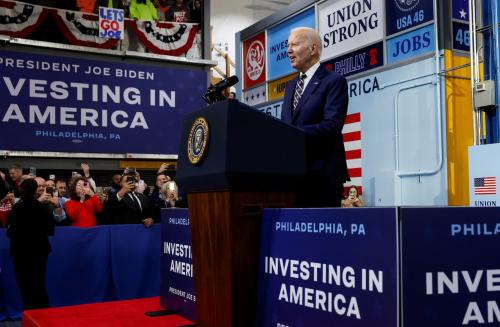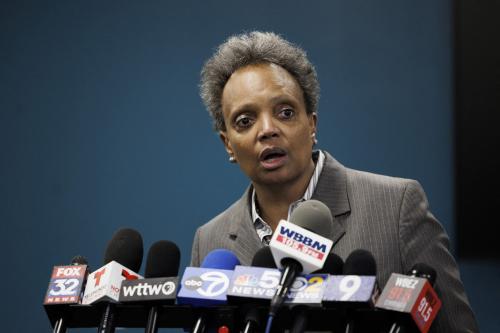The debt limit is once again an issue for political debate about federal spending. In this FixGov blog series, we’ve asked a number of experts to explain, why it’s so hard to cut federal spending?
For the next few months, as we head into the debt ceiling negotiations, we will be thrust into a familiar argument about deficits and government spending. Both parties appear to have taken social security and Medicare off the table. Ditto for defense. So, all there is left to talk about is the discretionary side of the budget — a measly 14% of the total budget in 2019.
Getting significant savings out of this part of the budget will be like getting blood from a stone. Is there some fraud and waste in there? Sure — but, as Donald Kettl has pointed out you need to spend money to find it. Are there things in there that don’t need to be done at the federal level? Sure, but even if you can get past the stubborn status quo, this requires the hard work of restructuring. Can taxes be raised, and tax expenditures be cut? Of course they can, but raising taxes is heresy for the Republican Party and cutting tax expenditures (such as the mortgage interest deduction) is Defcon 4 for the public.
While we don’t know what the Republican counter to Biden’s budget proposal looks like (and it may not be out until June) we do know that it may include a cap on future agency budgets — the equivalent of across-the-board cuts to the non-defense discretionary side of the budget. A little bit of history provides a good lesson in why across the board cuts are perhaps the worst way to cut spending.
The story starts in 2010 when Republicans had just taken control of the House of Representatives and Barack Obama was president. Due to spending as a result of the Great Recession, deficits were high, and Republicans were threatening to increase the debt ceiling unless large cuts in federal spending were made. The Budget Control Act set up a congressional committee — called the “Super Committee” — to come up with a bipartisan package of cuts. To no one’s surprise, it failed and an automatic “sequester” kicked in requiring 2% across the board cuts starting in January 2013.
As agencies began to comply with the sequester everyone — including the Republican Congress — got a hard lesson in why across the board cuts are a bad idea. The FAA (Federal Aviation Administration) runs the nation’s airports including over 21,000 air traffic controllers.
Their budget is appropriated in accounts, the biggest being “operations” mostly air traffic controllers and other safety related personnel. To implement the law the FAA required air traffic controllers to take unpaid furloughs. To keep everyone safe the FAA also implemented programs that increased aircraft spacing which of course sparked delays and reduced the number of flights that could be handled in any given period. This led to serious disruptions in New York City, Dallas-Fort Worth, Las Vegas, Chicago and Tampa airports, among others. By the fifth day of furloughs 863 flights had been delayed and another 2,132 were expected.
The public was outraged and let legislators, reporters, and their friends and acquaintances know. On April 27, 2013, just days into the furloughs, Congress passed legislation allowing the FAA to transfer money from the airport improvement account into the operations account and the furloughs ended. The bill was named the “Reducing Flight Delays Act of 2013,” the air traffic controllers went back to work and received their pay. And the portion of the budget that went to airport improvement grants was moved into a “protected” status so that airports could use them in the later years of their eligibility.
The moral of the story is that there’s a wrong way to cut government spending and a right way that almost is never used. That involves good faith negotiations between political parties, a willingness to compromise on each side’s respective priorities, and serious efforts to locate unworthy expenditures. As Congressman Barney Frank used to say, “a willingness to look for fat in the budget involves the way you look for fat in a nicely marbled piece of steak.” That is taking out a sharp knife and going after clear pockets of pork. It’s no coincidence that the last time the U.S. had a balanced budget was at the beginning of the information technology revolution. The creative use of new technology in this century could also result in savings as could investigating the devolution of some functions from the federal government to state and local governments.
The wrong way is the easy way — simply lop off a certain amount across the board. Hence the wrong way wins. Let’s hope it doesn’t win this time too.
The Brookings Institution is committed to quality, independence, and impact.
We are supported by a diverse array of funders. In line with our values and policies, each Brookings publication represents the sole views of its author(s).









Commentary
Why is federal spending so hard to cut? — There’s a right way and a wrong way
March 13, 2023